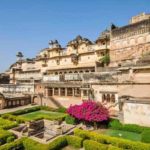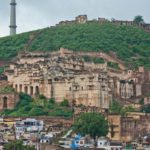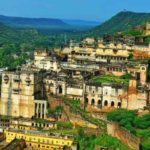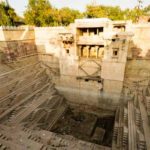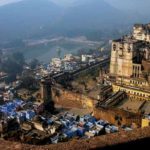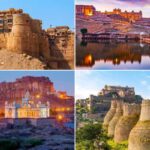The state of Bundi was founded in 1341 by Rao Deva of the “fire-born” Hada Chauhan Rajput clan, and the massive, square Taragarh Fort dates to his reign. Work on the palace began in the 16th century, and it was added to by successive rulers over the next 200 years, at different levels on the hillside. Unlike most other palaces in Rajasthan, there is very little Mughal influence in its architecture. The Garh Palace represents a rare example of the pure Rajput style, with curved roofs topping pavilions and kiosks, a profusion of temple columns and ornamental brackets, and typically Rajput motifs such as elephants and lotus flowers. Unusually, the palace is not built of the sandstone favored by most other Rajput Kingdoms, but of a hard, green-tinged serpentine stone, quarried locally. This stone, unlike sandstone, does not lend itself to fine carving. Instead, Garh Palace was embellished by superb paintings.

Top Tourist attractions in Bundi
Maharao Balwant Singh started the construction of Garh Palace in Bundi. The Garh Palace is the complex of numerous palaces which were built by rulers of different times. Most of the palaces were built between the 17th and 18th centuries. After a long period of neglection Garh palace again gaining its recognition. Garh Palace is known for its artistic Rajput style architecture which can be easily seen in its Jharokhas and pillars. Among other palaces which are famous for their decoration like Chhatra Mahal, Phool Mahal and Badal Mahal, there is a somewhat separate Ummed Mahal, famously known as ‘Chitrashala‘. Chitrashala has fascinating pavilion and a gallery of miniature murals located on a raised platform above a garden platform. It has entrance from other side and no entry fee with 8 am to 5 pm timings.

Raniji ki Baori, also known as “Queen’s stepwell” is located in Bundi town in Rajasthan. It was constructed in 1699 by Rani Nathavati Ji younger queen of ruling Rao Raja Anirudh Singh of Bundi. It is just a 46 meter deep step well with some superb carvings with its pillars and also a high arched gate. It is a multi-storied structure with worship on every floor. The baoli have entry marked by four support beams. Stone elephant statues of which face each other stand in the corners. Ogee brackets decorate every of the archways connected with 46 meter deep Raniji ki Baori, which is reputedly the largest Baori in Bundi. Baoris had been significant social constructions in the medieval Bundi simply because acted while assembly areas for your towns folk. Raniji ki Baori features superb carvings with its pillars and also a high arched gate. It had been constructed during the reign connected with his boy Maharao Raja Budh Singh which ruled Bundi between 1695 AD to 1729 AD.

Sukh Mahal, which is located on the periphery of the lake Jait Sagar was built during Umed Singh’s regime. It is a universal belief that the old palace and Sukh Mahal are connected by means of an underground tunnel. The main attraction of Sukh Mahal is a white marble Chhatri or an umbrella. This magnificent umbrella stands on the roof of the second storey of the Sukh Mahal. The purpose behind constructing this palace was to make provisions for the princes of those times to have a free hand in their nefarious activities.
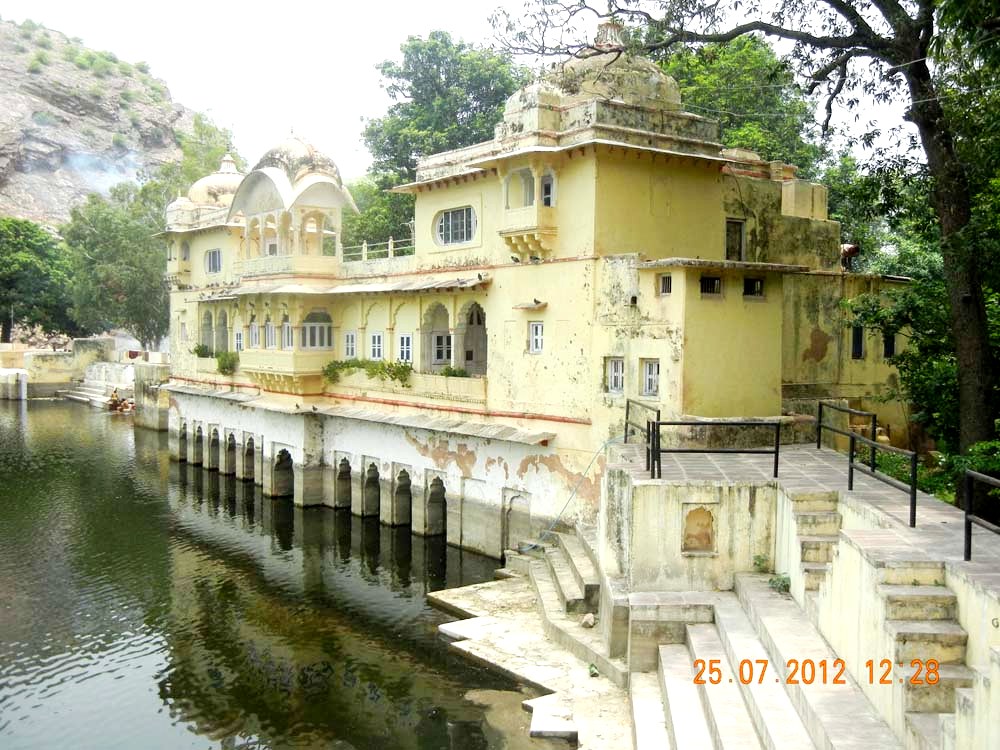
The palace is entered through the imposing Hathia Pol (“Elephant Gateway”), flanked by two towers and topped by a pair of huge painted elephants. The most spectacular parts of the palace are the Chattar Mahal (built in 1660), and the Chitrashala, an arcaded gallery (built between 1748 and 1770) overlooking a hanging garden. The murals in these are regarded as among the finest examples of Rajput painting. The themes they cover include scenes from religious ceremonies, hunting scenes and other princely amusements. The colors are predominantly blue and green, with touches of deep red and yellow. The Taragarh Fort crowns the crest of a steep hill overlooking the town, while the Garh Palace spills picturesquely down the hillside. This palace is Bundi’s – and Rajasthan’s – jewel. Lieutenant Colonel James Tod, (1782-1835), the British Political Agent and author of the authoritative Annals and Antiquities of Rajasthan, wrote that “the coup d’oeil of the castellated palace of Bundi, from whichever side you approach it, is the most striking in India.”

Rajasthan Budget Tour Packages

